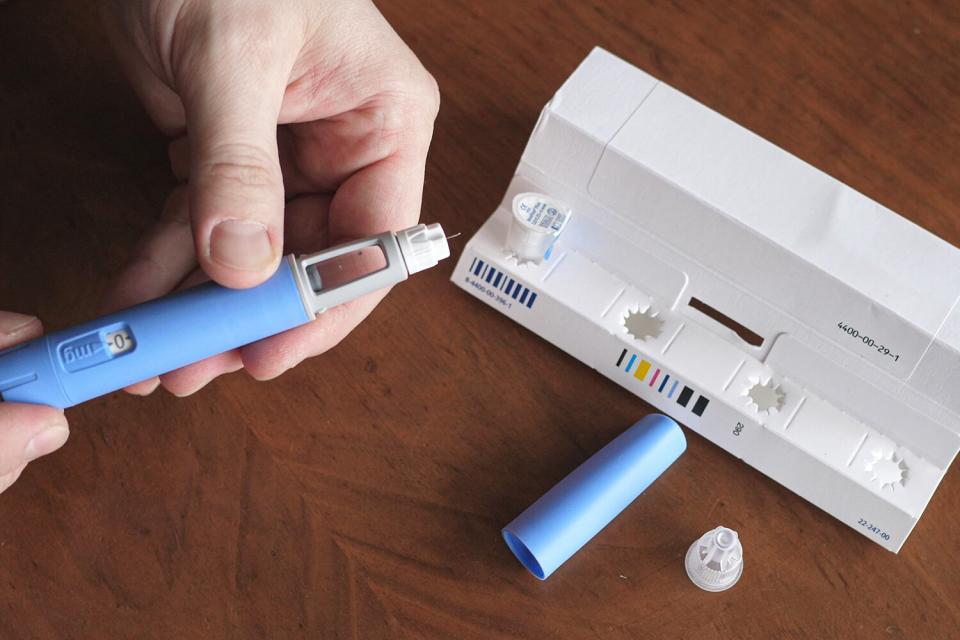What Is Ozempic Face? Doctors Explain the Side Effect of the Diabetes Drug
Medications intended for type 2 diabetes and clinical obesity — like Ozempic, Wegovy and Mounjaro — are trending on social media as drugs for quick weight loss.
However, some have reported the drugs cause an aged appearance, a side effect that is dubbed "Ozempic face." One of those people is Jennifer Berger, who told The New York Times that she used Mounjaro (tirzepatide) to lose weight following her pregnancy.
Mounjaro, at higher doses, has been proven to be highly effective for weight loss similar to Wegovy.
Berger explained that although using the drug — taken weekly by injection in the thigh, stomach or arm — allowed her to lose 20 lbs. and she loved her results, the 41-year-old said her face started to look very gaunt.
"I remember looking in the mirror, and it was almost like I didn't even recognize myself," she told the outlet. "My body looked great, but my face looked exhausted and old."

Getty
Dr. Oren Tepper, a New York-based plastic surgeon, explained to the Times that it's common for weight loss to deflate key areas of the face, which can result in a person looking more aged.
"When it comes to facial aging, fat is typically more friend than foe," he said. "Weight loss may turn back your biological age, but it tends to turn your facial clock forward."
RELATED: Are Ozempic and Wegovy Safe? All About the Diabetes and Obesity Drugs
RELATED: Remi Bader Says She 'Gained Double the Weight Back' After Stopping Weight-Loss Drug Ozempic
Dr. Paul Jarrod Frank, a dermatologist in New York, coined the term "Ozempic face" to describe this side effect, noting that it's typically people in their 40s or 50s who are concerned about the sagging that occurs as a result of the weight loss in their face.
"I see it every day in my office," Frank said. "A 50-year-old patient will come in, and suddenly, she's super-skinny and needs filler, which she never needed before. I look at her and say, 'How long have you been on Ozempic?' And I'm right 100 percent of the time. It's the drug of choice these days for the 1 percent."
To restore volume in a patient's face, doctors will often perform noninvasive, but expensive, procedures such as injecting Radiesse and hyaluronic acid-based fillers or Sculptra injections, which stimulates collagen production. Doctors can also restore volume with a face lift or by transferring fat from other body parts to the face.

